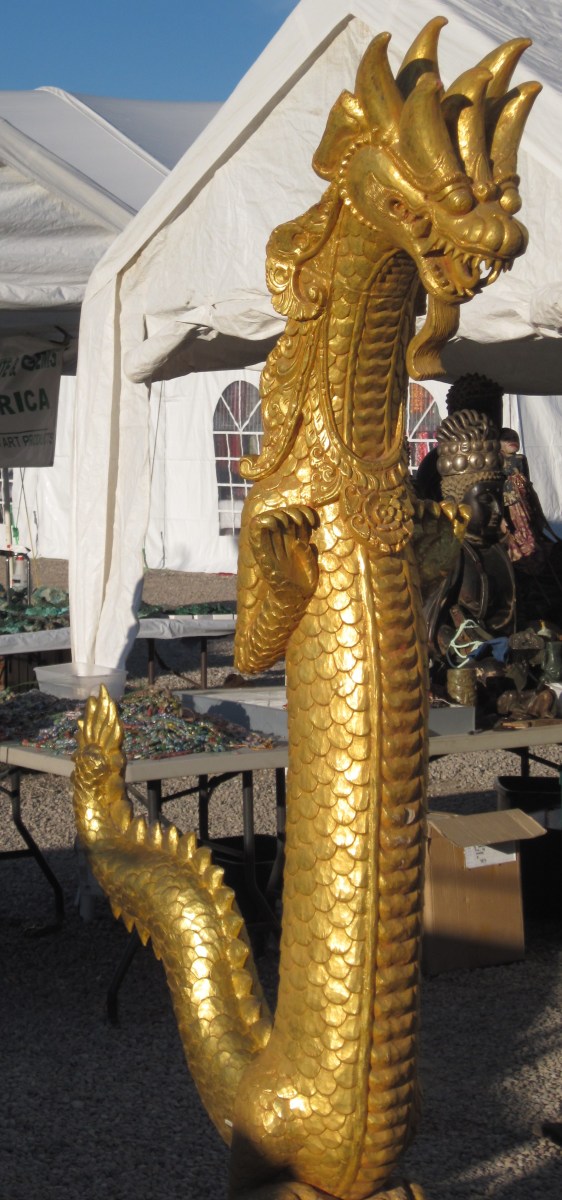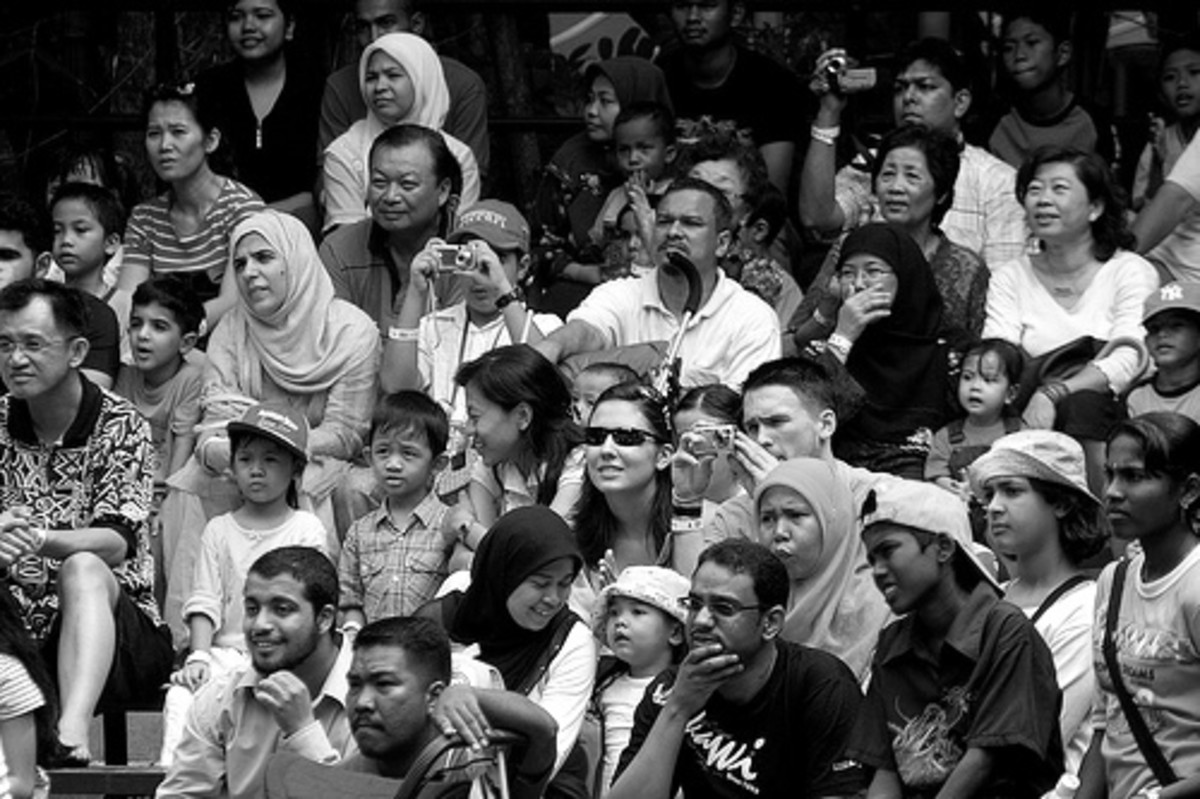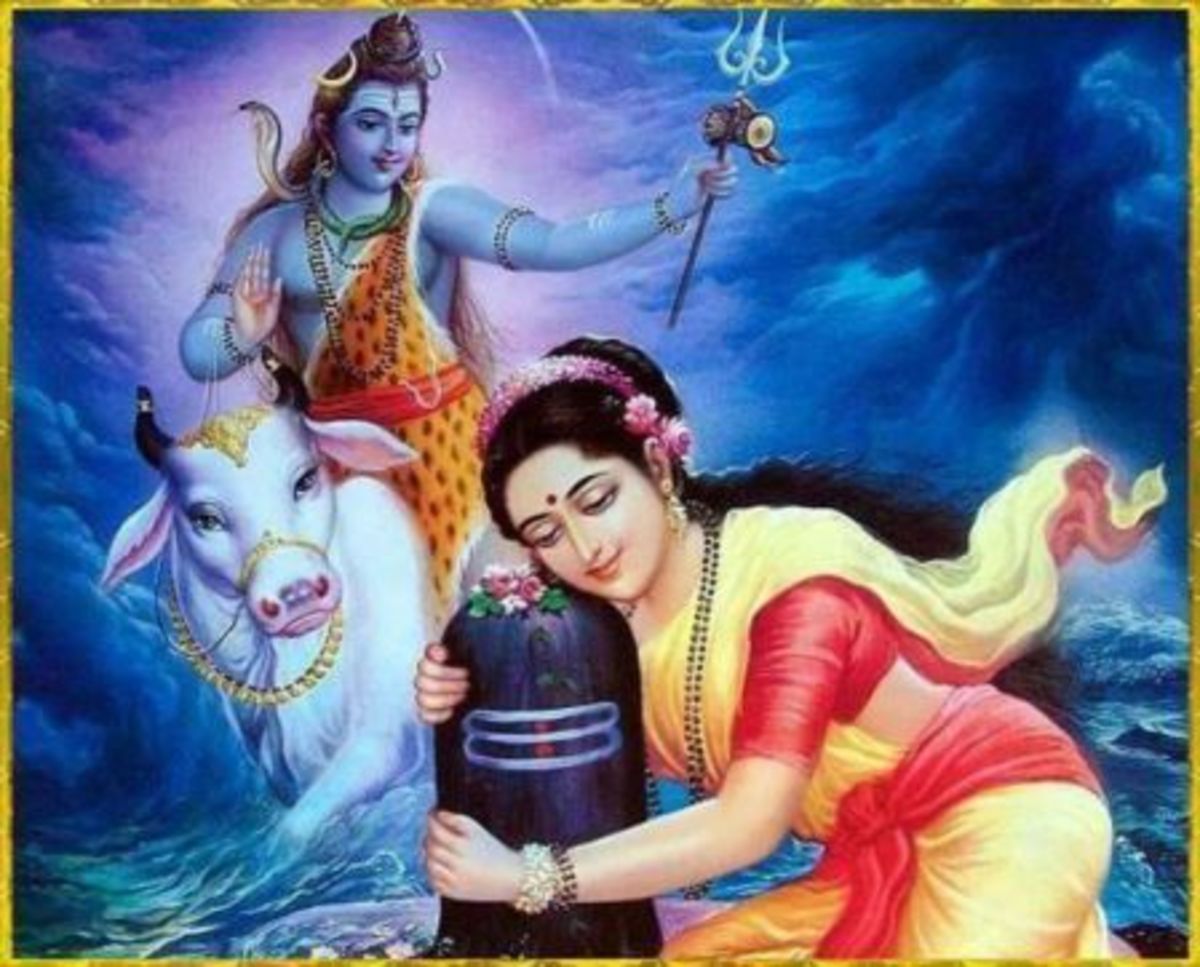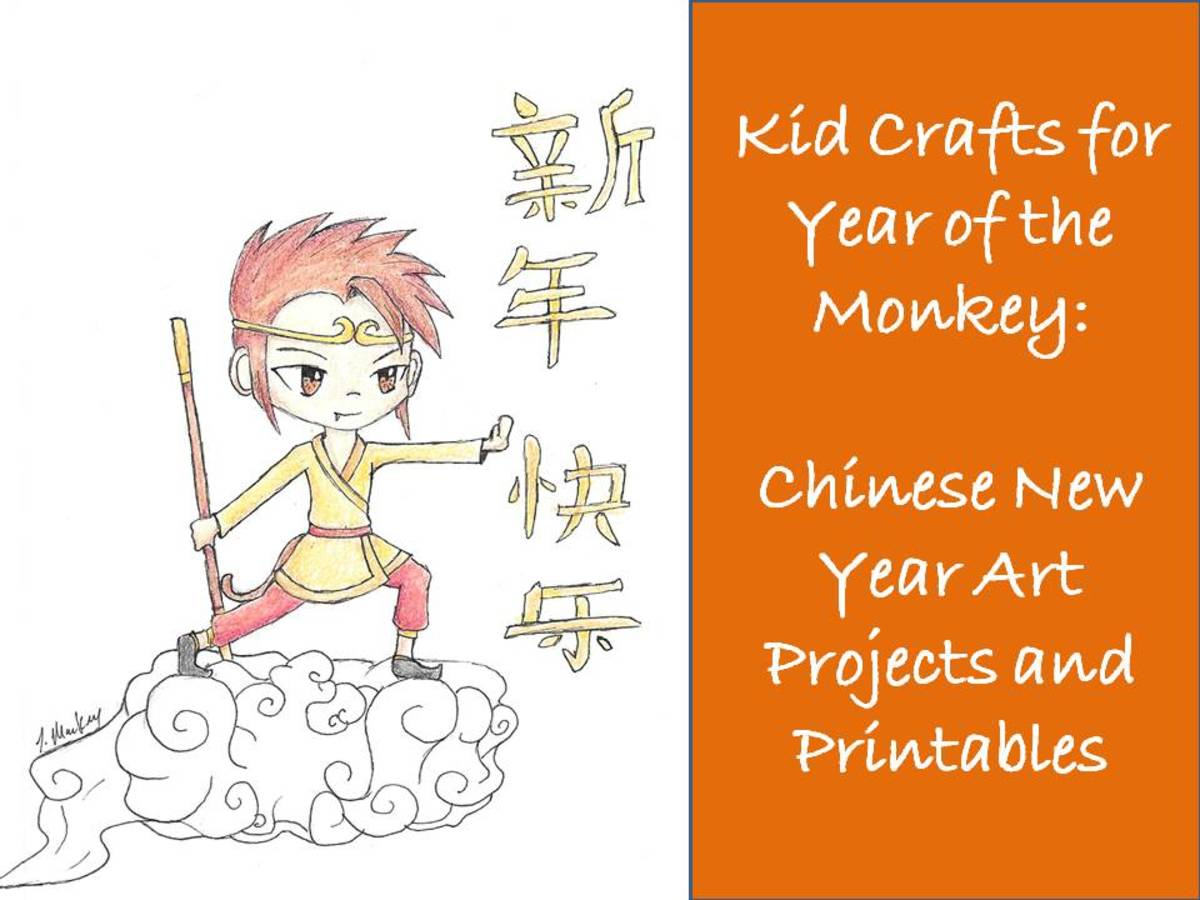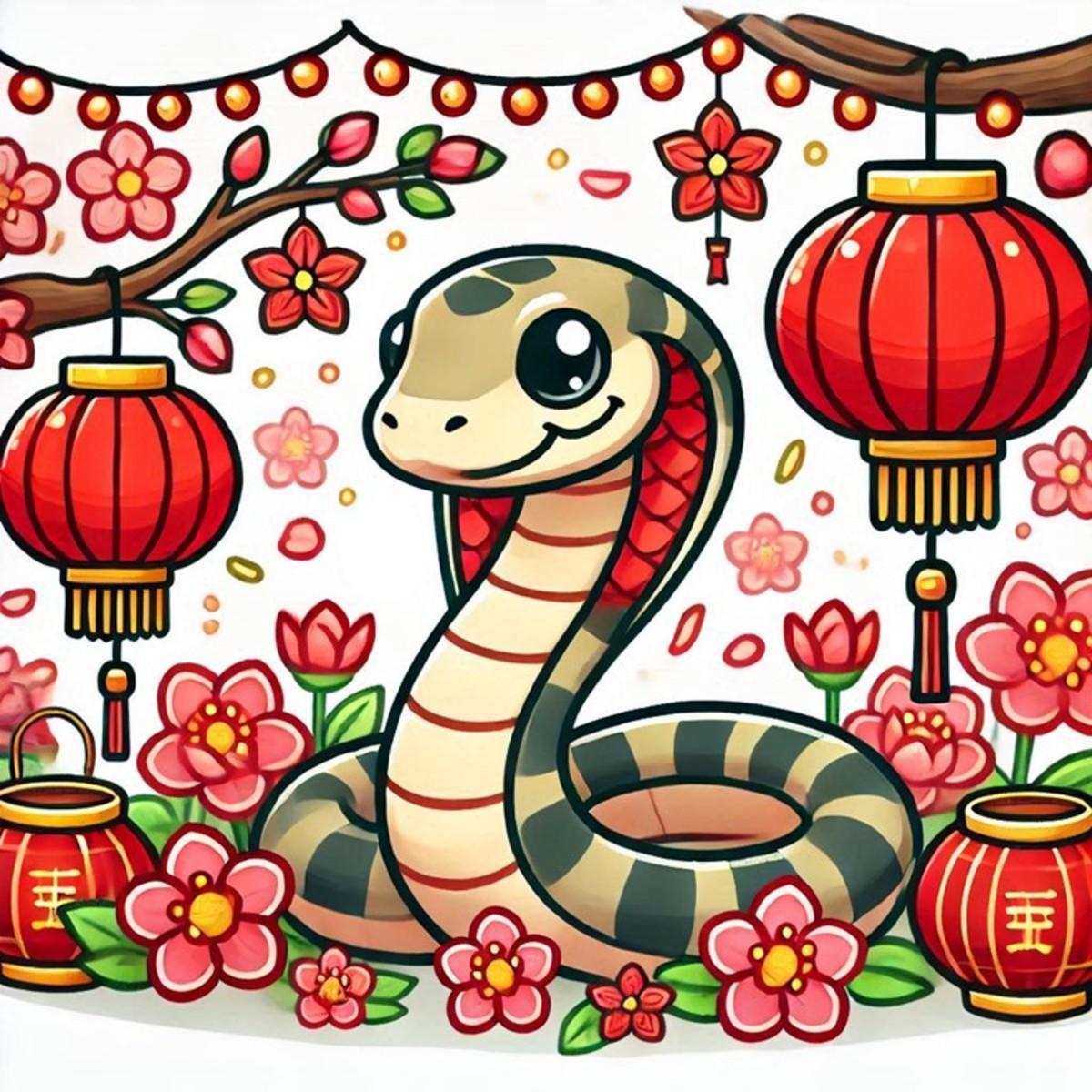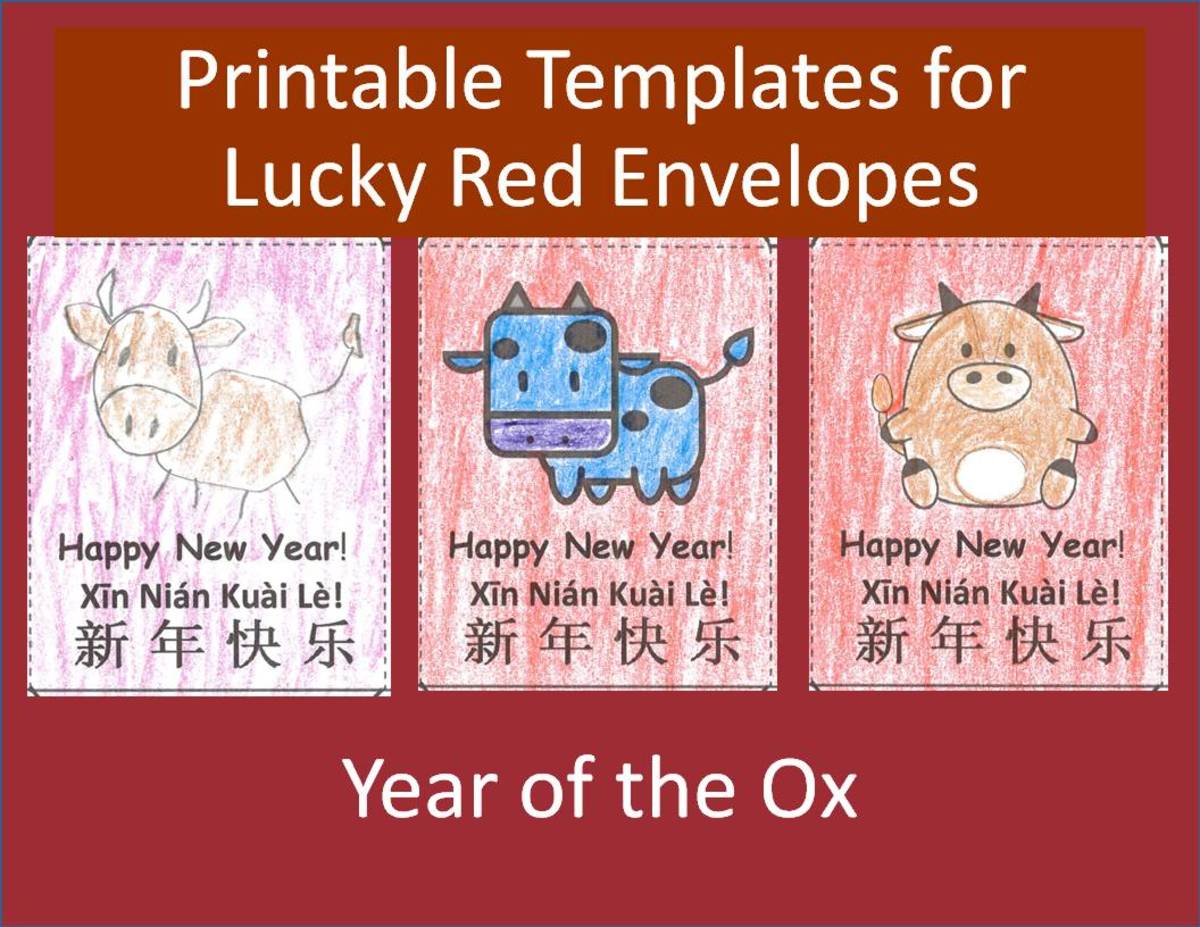- HubPages»
- Holidays and Celebrations»
- Asia Holidays»
- Chinese Holidays
Chinese New Year
A Fifteen Day Holiday
The Chinese New Year festival is major celebration in the Chinese year. Preparations begin twenty-two days prior to the New Year and continue for fifteen days. Because the New Year is based upon a lunar (moon) month the actual date varies from year to year.
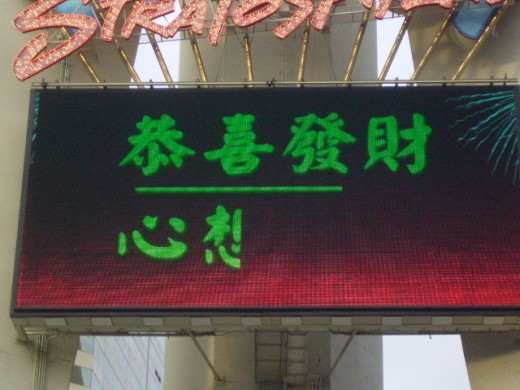
Chinese New Year Begins with the New Moon Which is Invisible in the Night Sky
The Chinese New Year festival begins with the new moon and ends fifteen days later with the full moon. The new moon occurs when the un-illuminated or dark side of the moon is facing earth.
Because the darkened side of the moon is facing the earth, the dark moon blends with the night sky and cannot be seen. As the days pass, the illuminated side of the moon slowly turns toward the earth so that it first appears as a crescent, then a quarter moon, half moon and finally as a full disk.
This full disk is the full moon. Continuing on its journey, the moon again slowly moves into shadow shrinking to half, then quarter then crescent and finally not visible at all – we are now back to a "new moon".
The entire process of going from new moon to new moon is the result of the moon's orbit around the earth. It takes about 29.5 days for the moon to make a complete orbit of the earth and this constitutes a lunar month.
The Chinese lunar month begins with the first new moon following the end of the last lunar month of the year.
Like the Western celebrations of Christmas and New Year's, the Chinese New Year festival falls in winter where the days are short, the previous year's harvest is in and the planting season for the new year has not yet arrived.
Since the summer solstice the days have been becoming increasing shorter and colder. Now, with the winter solstice just past, the days are again slowly becoming longer and people know that warmer weather and spring will soon follow.
The season thus lends itself to relaxing, enjoying the company of family and friends and celebrating. In this break from the normal labor associated with the agrarian life. During this celebration, people also take time to rejuvenate their spiritual life and the Chinese New Year, like the Western Christmas, has a religious and spiritual basis as well as its secular side.
Chinese New Year Celebrations
The Chinese New Year's Eve and New Year's Day are traditionally a family affair with the family gathering and renewing their bonds with a family thanksgiving feast.
In the past, and in many households today, the celebrations include a religious ceremony that honors the gods of the household and the family ancestors. Departed relatives and ancestors are remembered with great respect and are thanked for their contribution to the family. While older family members reflect on the departed and their contribution to the family, the younger members come to understand that they are a part of a continuum in which they benefit from the contribution of those that went before them and will themselves leave a legacy to future generations.
The New Year's Eve thanksgiving feast is a family affair where all gather around the table to feast together. All includes the departed ancestors as the spirits of the departed ancestors who join with the living members of the family to celebrate the unity of the family and honor both living and deceased in the family.
As the fifteen day holiday season progresses religious and secular festivities continue. On New Year's day – the first day of the lunar new year – many abstain from eating meat in the belief that this will help to ensure a long and happy life. Households also offer sacrifices and prayers to all the gods of Heaven and Earth.
The second day of the festivities is considered to be the birthday of all dogs so people are extra kind to dogs on this day. It is also a day to pray to one's ancestors.
The third and fourth days are the days in which men pay respects to their wives' parents. No mother-in-law jokes on these two days!
The fifth day is Po Woo and it is a day that everyone stays home to welcome the God of Wealth. One obviously does not want to be away when this god pays a visit. Also, visiting another home is believed to bring bad luck to both the one visiting and the one visited.
On days six through ten, people visit friends and family to celebrate and renew bonds of friendship and family. People also visit temples to pray for health and prosperity in the new year.
On the tenth, eleventh and twelfth days it is the custom to invite family and friends for dinner. There is much feasting on these three days.
By the thirteenth day people are ready for a rest from partying, so it is a day for relaxing and eating light meals.
The fourteenth day is usually devoted to preparing for the Lantern Festival which is held the following evening.
The Lantern Festival on the night of the fifteenth day brings to an end the New Year's celebrations. The fifteenth day coincides with the full moon which is the halfway point between the start of the monthly lunar cycle and its end. Chinese New Year's celebrations thus occupy the first half of the first month of the lunar new year.
Like holidays in the West, the traditions of the Chinese New Year are continuing to evolve. Life changes and new generations have the opportunity to re-examine traditions and beliefs. So, while the core of the holiday remains constant the celebrations and customs surrounding it tend to change over time.
Further, the Chinese constitute one quarter of the world's population and are spread all over the world. China itself is a large country and within China there are variations in traditions involving the New Year so you can imagine that more variations will occur in Chinese communities in other parts of the world.
Finally, the focus of the holiday is on family and there will naturally be differences among families in the ways they interpret and practice the traditions associated with the holiday. It is the spirit of any holiday that is important – the customs and traditions are merely vehicles with which to express and enjoy that spirit.
Dates for Chinese New Year
As stated above, the Chinese year is based upon a 29.5 day lunar month which results in the dates for the start of the Chinese New Year not aligning with a specific date in our Western calendar. Below are the Western years and Calendar Dates for the start of the Chinese New Year on the left and the corresponding Chinese Zodiac name for the year along with the number of the year in the Chinese Calendar.
2005 - Feb. 9 – Year of the Rooster (Chinese Year 4703)
2006 - Jan. 29 – Year of the Dog (Chinese Year 4704)
2007 - Feb. 18 – Year of the Pig (Boar) (Chinese Year 4705)
2008 - Feb. 7 – Year of the Rat (Chinese Year 4706)
2009 - Jan. 26 – Year of the Ox (Chinese Year 4707)
2010 - Feb. 14 – Year of the Tiger (Chinese Year 4708)
Links to My Other Chinese New Year Hubs
- Year of the Tiger - Chinese New Year 2010 and Other New Year Observances
When we speak of the New Year, the date that comes to most people's minds is January 1st the date that many of the old Roman calendars as well as the modern Gregorian and Julian calendars use as the start of... - Chinese New Year Flowers and Fruit
As the Chinese New Year begins, homes blossom with traditional flowers and fruits. In addition to the decorative and festive effect, the fruits and flowers convey a rich and symbolic message. Each one has a... - Chinese New Year 2009 - The Year of the Ox
January 26, 2009 is the beginning of the Chinese New Year celebrations. January 26 is the day in the western Gregorian calendar that marks the beginning the the year of the Ox in the Chinese calendar. As... - Chinese New Year Custom of Lai See Gifts
Lai See is the custom of giving a gift of money in a special red envelope during the New Year's celebration. In the Chinese culture red is a lucky color. Both red and gold (which represents wealth) are...

